Three-Dimensional Physical Simulation of Horizontal Well Pumping Production and Water Injection Disturbance Assisted CO2 Huff and Puff in Shale Oil Reservoir
Abstract
:1. Introduction
2. Experimental Section
2.1. Design of 3D Huff and Puff Physical Simulation Model
2.2. Three-dimensional Physical Simulation System for Huff and Puff
2.3. Huff and Puff Experimental Scenario
2.4. Experimental Procedures
- According to the above process, the 3D shale blocks were filled and created, and the small-core coring was carried out to test its porosity and permeability characteristics. When it accorded with the physical properties of the actual shale reservoir, the 3D huff and puff physical simulation experiment system was built in turn. Moreover, the pressure leakage test of the whole equipment was conducted for tightness inspection.
- If pumping production was set, CO2 was injected from one end of the horizontal well until the injection pressure reached the set pumping pressure of 16 MPa. When the pressure was stabilized, the back pressure was set to 2 MPa and the horizontal well was opened to production. Then, the produced oil was collected with the collection device and the oil production data were recorded through the flow monitor.
- If there was no pumping production, CO2 was injected from one end of the horizontal well, and the injection was stopped when the set injection pressure of 16 MPa was reached and the pressure change within 4 h was less than 0.1 MPa.
- If water injection disturbance was required, CO2 was injected to reach a set pressure of 12 MPa, and after stabilization, water was injected through the horizontal well until the injection pressure reached the upper disturbance pressure of 16 MPa. Next, the back-pressure valve was opened to reduce the pressure to the point where CO2 was about to overflow at the wellhead, and then water was injected again to the disturbance upper limit pressure, the above operation was repeated for 10 rounds.
- Soaking and monitoring of the pressure propagation effect was performed. After 20 h, the back pressure was set to 8 MPa and the horizontal well was opened for production. The pressure change was monitored in real time through the pressure sensors and the volume of produced fluid was also measured at the same time. When no fluid was produced at the outlet, this cycle experiment was stopped.
- Steps (2)–(5) were repeated for 6 cycles of huff and puff to end the whole experiment.
3. Results and Discussions
3.1. Comparisons of Dynamic Characteristics of Soaking
3.1.1. Dynamic Characteristics of Soaking Curves
3.1.2. Dynamic Distribution of Pressure Field in Soaking
3.2. Development Effect Evaluation of CO2 Huff and Puff Models
3.2.1. Comparisons of Cumulative Oil Production
3.2.2. Comparison of Oil Recovery and Oil–Gas Replacement Rate
4. Conclusions
- (1)
- The dynamic characteristics and pressure field distribution of soaking under case one and case two schemes were revealed. The soaking stage could be divided into three stages: differential pressure driving, diffusion driving and dissolution driving. In the differential pressure driving stage, the pressure showed a step-by-step drop, while in the diffusion driving stage, the pressure drop was relatively stable and linear, and the dissolution drive was mainly caused by the dissolution of CO2 in crude oil.
- (2)
- Compared with the conventional CO2 huff and puff, the new method of CO2 huff and puff assisted by pumping production and water injection disturbance increased the oil recovery by 7.18%. Compared with the pressure field distribution, the pressure propagation range after disturbance was wider, and the water plug could control the gas velocity, making the leading edge more uniform and stable, indicating that the water injection disturbance could effectively expand the sweep range of CO2.
- (3)
- Comparing the oil recovery of each cycle of case one and case two, the contribution of oil recovery was concentrated in the first four cycles, but the oil recovery gap between case one and case two was not obvious in the first three cycles, and the gap increased gradually after the fourth cycle, indicating that the water injection disturbance had a good effect on the subsequent cycles of oil recovery, which could effectively supplement the formation energy and increase the development cycle.
- (4)
- The oil–gas replacement rate for case two was 1.2728, which was much higher than that of 0.4523 for case one. After water injection disturbance, water replaced gas for formation energy enhancement, which realized the combination of water injection energy enhancement and gas injection energy enhancement and improved the economic adaptability of gas injection huff and puff.
Author Contributions
Funding
Institutional Review Board Statement
Informed Consent Statement
Data Availability Statement
Acknowledgments
Conflicts of Interest
References
- Zou, C.N.; Zhu, R.K.; Bai, B.; Yang, Z.; Hou, L.H.; Zha, M.; Fu, J.H.; Shao, Y.; Liu, K.Y.; Cao, H.; et al. Significance, Geologic Characteristics, Resource Potential and Future Challenges of Tight Oil and Shale Oil. Bull. Mineral. Petrol. Geochem. 2015, 34, 3–17. [Google Scholar]
- Clark, A.J. Determination of Recovery Factor in the Bakken Formation, Mountrail County, ND. In Proceedings of the All Days, New Orleans, LA, USA, 4 October 2009. [Google Scholar]
- Yu, W.; Lashgari, H.; Sepehrnoori, K. Simulation Study of CO2 Huff-n-Puff Process in Bakken Tight Oil Reservoirs. In Proceedings of the SPE Western North American and Rocky Mountain Joint Meeting, Denver, CO, USA, 17 April 2014. [Google Scholar]
- Huang, Y.J.; Geng, J.K.; Bai, Y.B.; Sun, B.H.; Huang, L. Geochemical characteristics and oil-source correlation of crude oils in 6th and 7th members of Yanchang Formation, Fuxian area, Ordos Basin. Pet. Geol. Exp. 2020, 42, 281–289. [Google Scholar]
- Zhou, D.S.; Shi, Y.H.; Li, M.; Zhang, Z.; Liu, S. Study on spontaneous imbibition feature of tight sandstone based NMR experiment. J. Xian Shiyou Univ. (Nat. Sci. Ed.) 2018, 33, 51–57. [Google Scholar]
- Zhang, Z.H.; Wei, X.S.; Gong, H.J.; Xue, W.Z.; Chen, B.; Shi, W.X. Diagenesis characteristics and evolution of porosity of Chang 7 tight sandstone reservoir in Dingbian Oilfield, Ordos Basin. Pet. Geol. Recovery Effic. 2020, 27, 43–51. [Google Scholar]
- Wang, Y.; Zhang, L.; Deng, J.; Wang, Y.; Ren, S.; Hu, C. An Innovative Air Assisted Cyclic Steam Stimulation Technique for Enhanced Heavy Oil Recovery. J. Pet. Sci. Eng. 2017, 151, 254–263. [Google Scholar] [CrossRef]
- Wang, Y.; Zhang, Y.; Liu, Y.; Zhang, L.; Ren, S.; Lu, J.; Wang, X.; Fan, N. The Stability Study of CO2 Foams at High Pressure and High Temperature. J. Pet. Sci. Eng. 2017, 154, 234–243. [Google Scholar] [CrossRef]
- Rathmell, J.J.; Stalkup, F.I.; Hassinger, R.C. A Laboratory Investigation of Miscible Displacement by Carbon Dioxide. In Proceedings of the Fall Meeting of the Society of Petroleum Engineers of AIME, New Orleans, LA, USA, 3 October 1971. [Google Scholar]
- Wang, Y.; Ren, S.; Zhang, L.; Peng, X.; Pei, S.; Cui, G.; Liu, Y. Numerical Study of Air Assisted Cyclic Steam Stimulation Process for Heavy Oil Reservoirs: Recovery Performance and Energy Efficiency Analysis. Fuel 2018, 211, 471–483. [Google Scholar] [CrossRef]
- Wang, Y.; Ren, S.; Zhang, L. Mechanistic Simulation Study of Air Injection Assisted Cyclic Steam Stimulation through Horizontal Wells for Ultra Heavy Oil Reservoirs. J. Pet. Sci. Eng. 2019, 172, 209–216. [Google Scholar] [CrossRef]
- Peng, L.; Yin, H.; Zhong, C. A search of Application and Development of Carbon Dioxide Flooding. Guangdong Chem. Ind. 2017, 44, 143–144. [Google Scholar]
- Pranesh, V. Subsurface CO2 Storage Estimation in Bakken Tight Oil and Eagle Ford Shale Gas Condensate Reservoirs by Retention Mechanism. Fuel 2018, 215, 580–591. [Google Scholar] [CrossRef]
- Deng, R.; Tian, W.; Li, Z.; Zhao, L.; Dai, H. Microscopic Limits of Reservoir Producing for Carbon Dioxide Flooding. Spec. Oil Gas. Reserv. 2019, 26, 133–137. [Google Scholar]
- Chung, F.T.H.; Jones, R.A.; Nguyen, H.T. Measurements and Correlations of the Physical Properties of CO2-Heavy Crude Oil Mixtures. SPE Reserv. Eng. 1988, 3, 822–828. [Google Scholar] [CrossRef]
- Xiao, P.; Yang, Z.; Wang, X.; Xiao, H.; Wang, X. Experimental Investigation on CO2 Injection in the Daqing Extra/Ultra-Low Permeability Reservoir. J. Pet. Sci. Eng. 2017, 149, 765–771. [Google Scholar] [CrossRef]
- Lang, D.; Lun, Z.; Lyu, C.; Wang, H.; Zhao, Q.; Sheng, H. Nuclear Magnetic Resonance Experimental Study of CO2 Injection to Enhance Shale Oil Recovery. Pet. Explor. Dev. 2021, 48, 702–712. [Google Scholar] [CrossRef]
- Ding, M.; Yuan, F.; Wang, Y.; Xia, X.; Chen, W.; Liu, D. Oil Recovery from a CO2 Injection in Heterogeneous Reservoirs: The Influence of Permeability Heterogeneity, CO2-Oil Miscibility and Injection Pattern. J. Nat. Gas. Sci. Eng. 2017, 44, 140–149. [Google Scholar] [CrossRef]
- Ren, B.; Zhang, L.; Huang, H.; Ren, S.; Chen, G.; Zhang, H. Performance Evaluation and Mechanisms Study of Near-Miscible CO2 Flooding in a Tight Oil Reservoir of Jilin Oilfield China. J. Nat. Gas. Sci. Eng. 2015, 27, 1796–1805. [Google Scholar] [CrossRef]
- Li, L.; Sheng, J.J.; Xu, J. Gas Selection for Huff-n-Puff EOR in Shale Oil Reservoirs Based upon Experimental and Numerical Study. In Proceedings of the SPE Unconventional Resources Conference, Calgary, AB, Canada, 15 February 2017. [Google Scholar]
- Sun, J.; Zou, A.; Sotelo, E.; Schechter, D. Numerical Simulation of CO2 Huff-n-Puff in Complex Fracture Networks of Unconventional Liquid Reservoirs. J. Nat. Gas. Sci. Eng. 2016, 31, 481–492. [Google Scholar] [CrossRef]
- Chen, C.; Gu, M. Investigation of Cyclic CO2 Huff-and-Puff Recovery in Shale Oil Reservoirs Using Reservoir Simulation and Sensitivity Analysis. Fuel 2017, 188, 102–111. [Google Scholar] [CrossRef]
- Song, C.; Yang, D. Experimental and Numerical Evaluation of CO2 Huff-n-Puff Processes in Bakken Formation. Fuel 2017, 190, 145–162. [Google Scholar] [CrossRef]
- Li, F.; Luo, Y.; Luo, X.; Wang, L.; Nagre, R.D. Experimental Study on a New Plugging Agent during CO2 Flooding for Heterogeneous Oil Reservoirs: A Case Study of Block G89-1 of Shengli Oilfield. J. Pet. Sci. Eng. 2016, 146, 103–110. [Google Scholar] [CrossRef]
- Alfarge, D.; Wei, M.; Bai, B. Factors Affecting CO2-EOR in Shale-Oil Reservoirs: Numerical Simulation Study and Pilot Tests. Energy Fuels 2017, 31, 8462–8480. [Google Scholar] [CrossRef]
- Meng, X.; Sheng, J.J.; Yu, Y. Evaluation of Enhanced Condensate Recovery Potential in Shale Plays by Huff-n-Puff Gas Injection. In Proceedings of the SPE Eastern Regional Meeting, Morgantown, WV, USA, 13 October 2015. [Google Scholar]
- Song, C.; Yang, D. Performance Evaluation of CO2 Huff-n-Puff Processes in Tight Oil Formations. In Proceedings of the SPE Unconventional Resources Conference, Calgary, AB, Canada, 5 November 2013. [Google Scholar]
- Hao, H.; Hou, J.; Zhao, F.; Song, Z.; Hou, L.; Wang, Z. Gas Channeling Control during CO2 Immiscible Flooding in 3D Radial Flow Model with Complex Fractures and Heterogeneity. J. Pet. Sci. Eng. 2016, 146, 890–901. [Google Scholar] [CrossRef]
- Christensen, R.; Stenby, E.H.; Skauge, A. Review of WAG Field Experience. SPE Res. Eval. Eng. 2001, 4, 97–106. [Google Scholar] [CrossRef]
- Zahoor, M.K.; Derahman, M.N.; Yunan, M.H. WAG process design–An updated review. Braz. J. Pet. Gas 2011, 5, 109–121. [Google Scholar] [CrossRef]
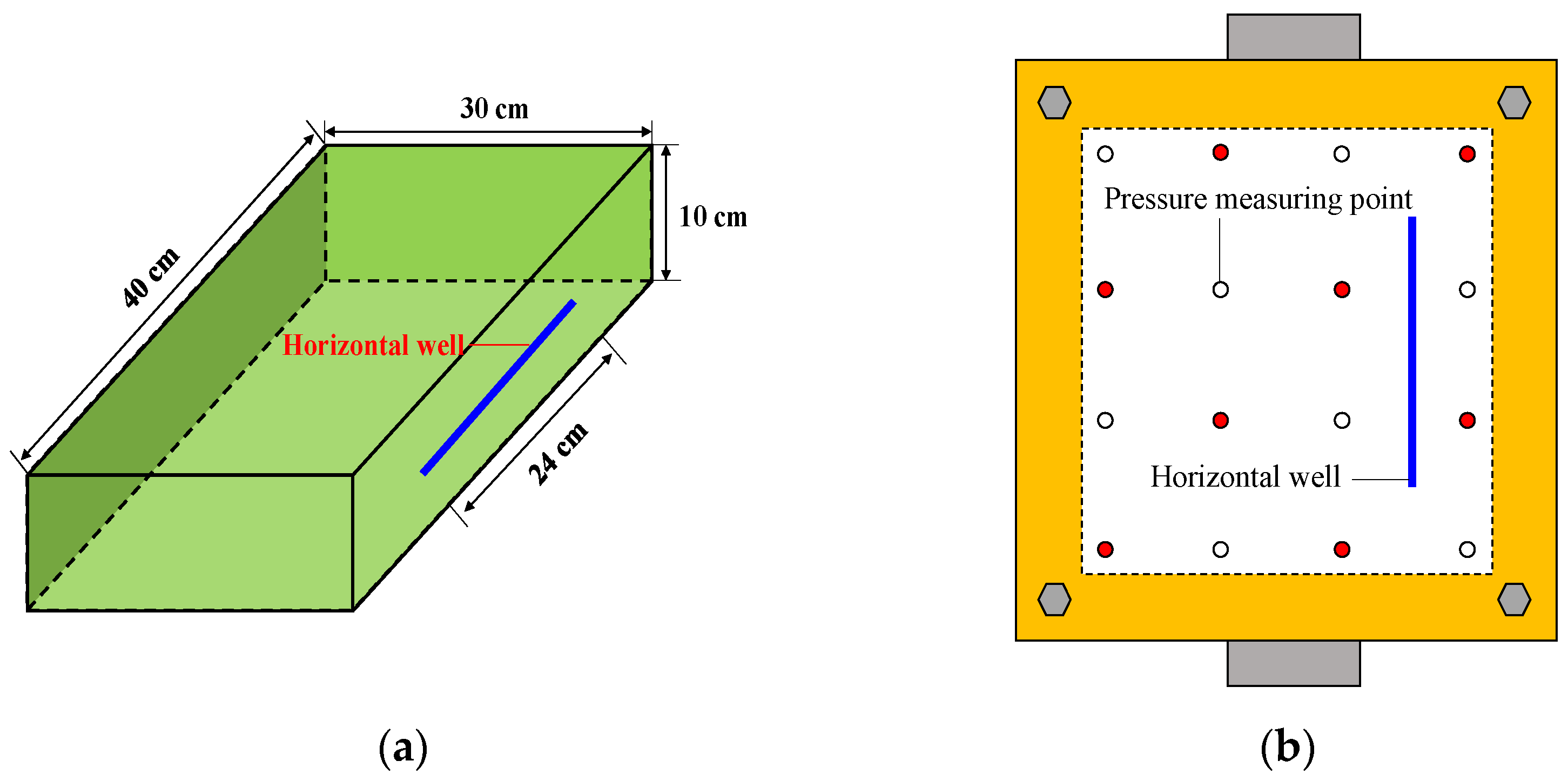

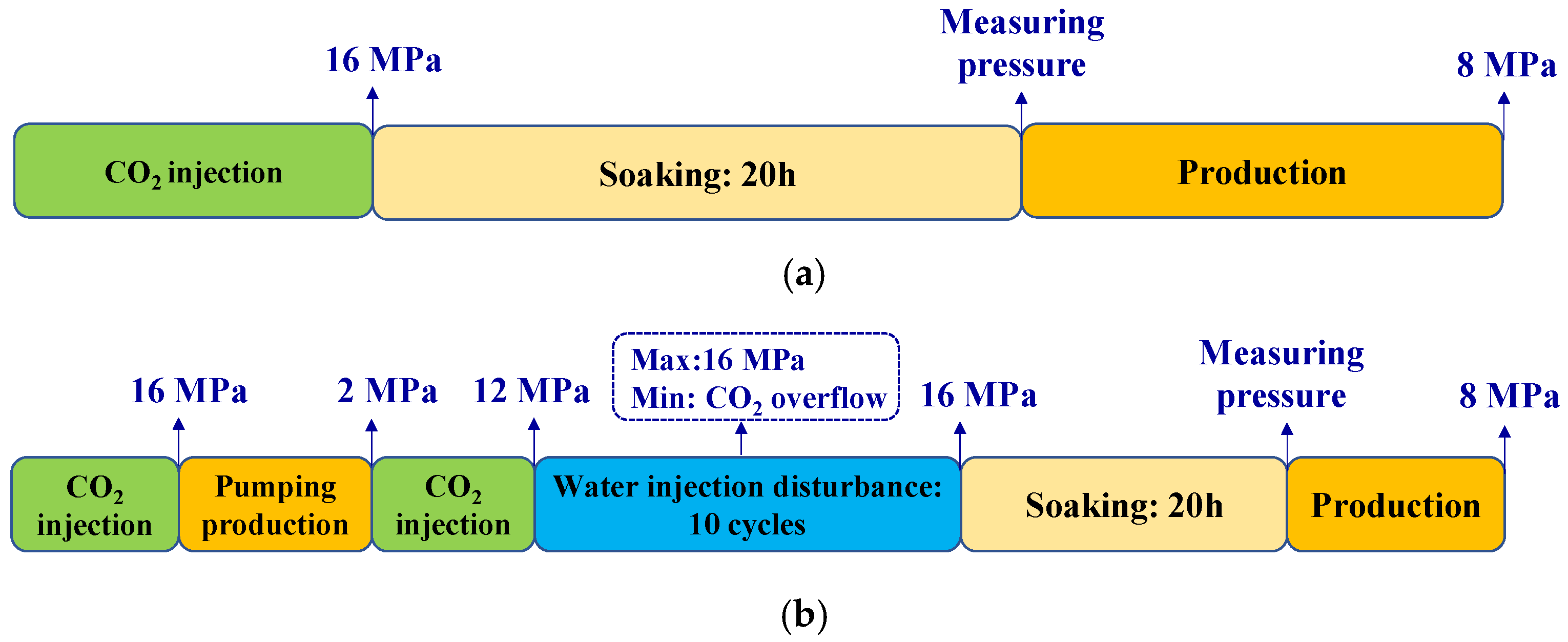
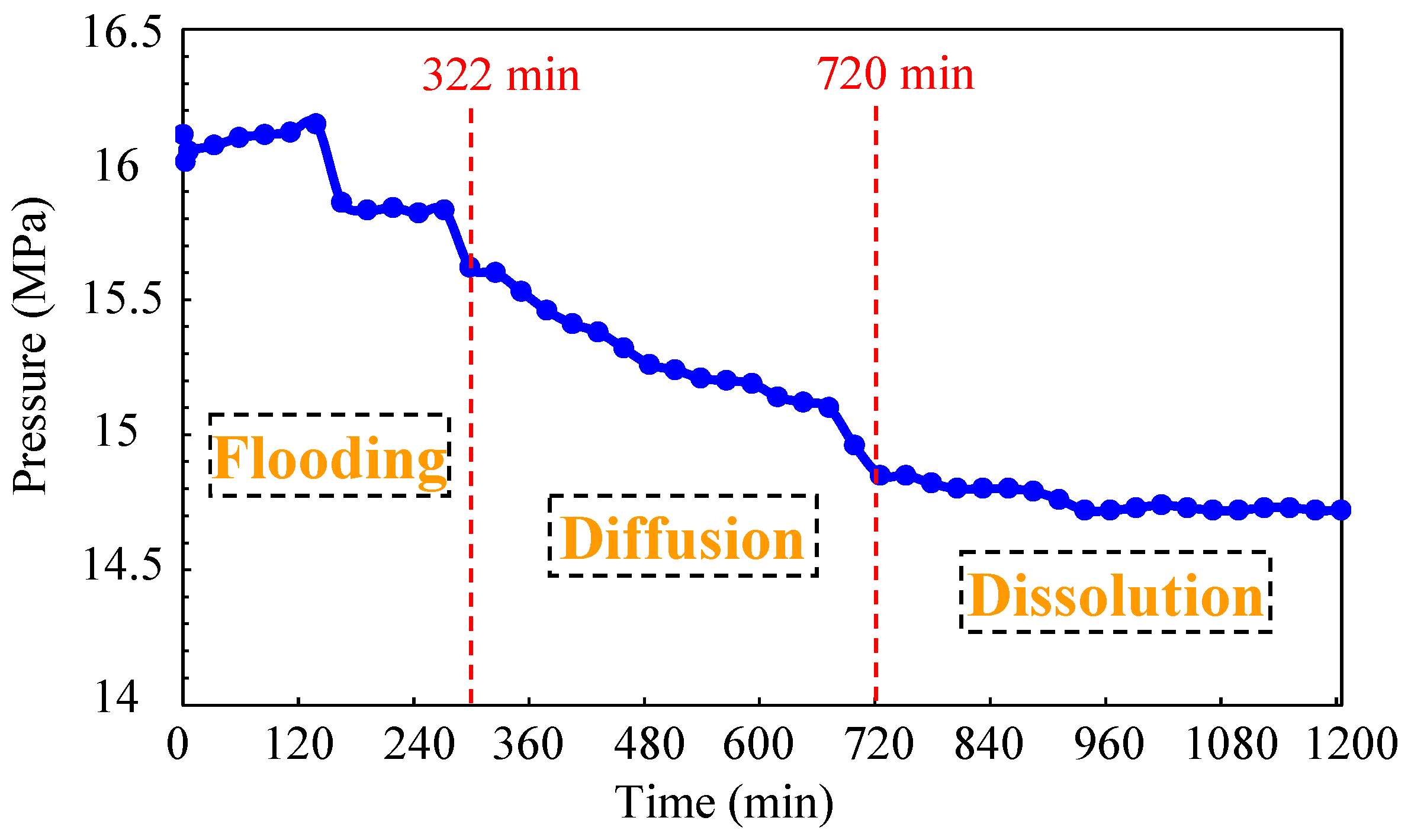


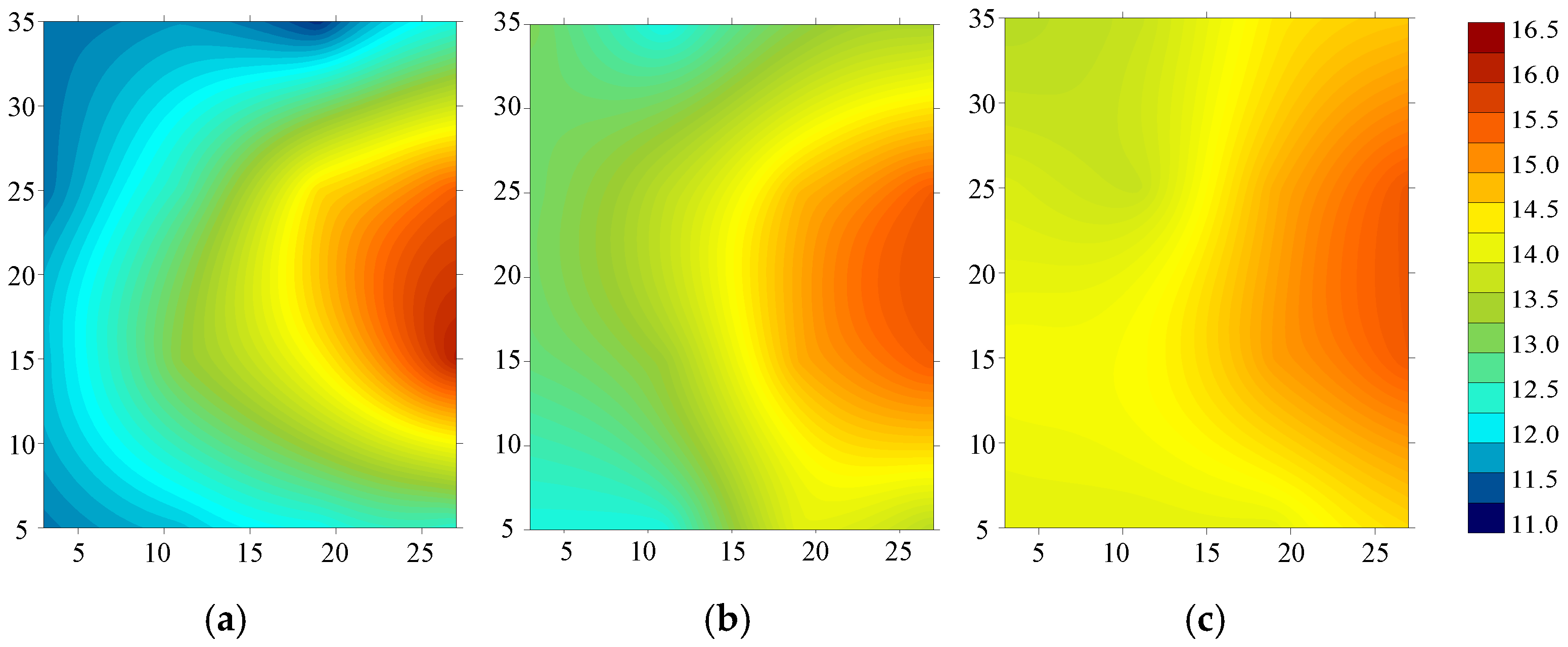
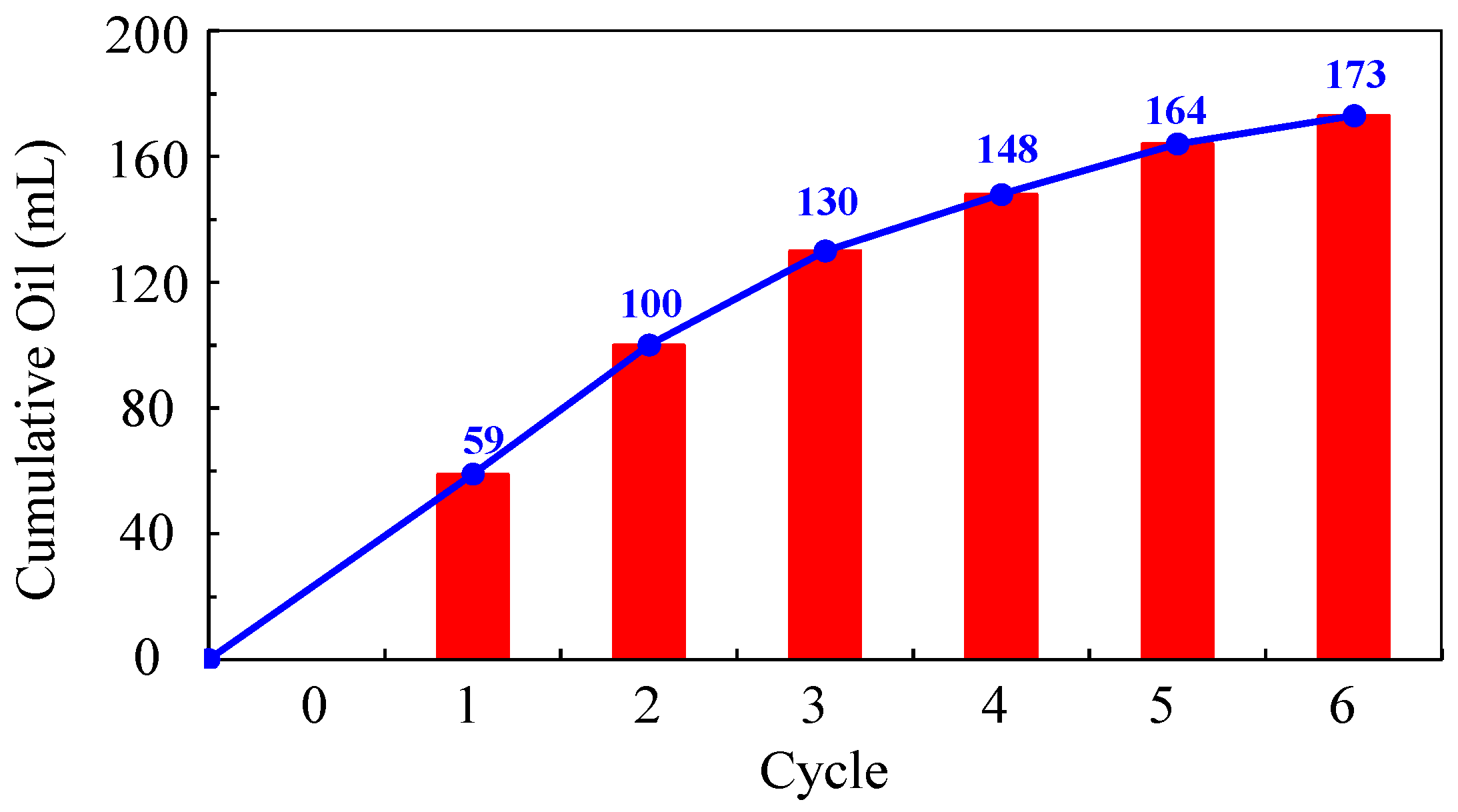
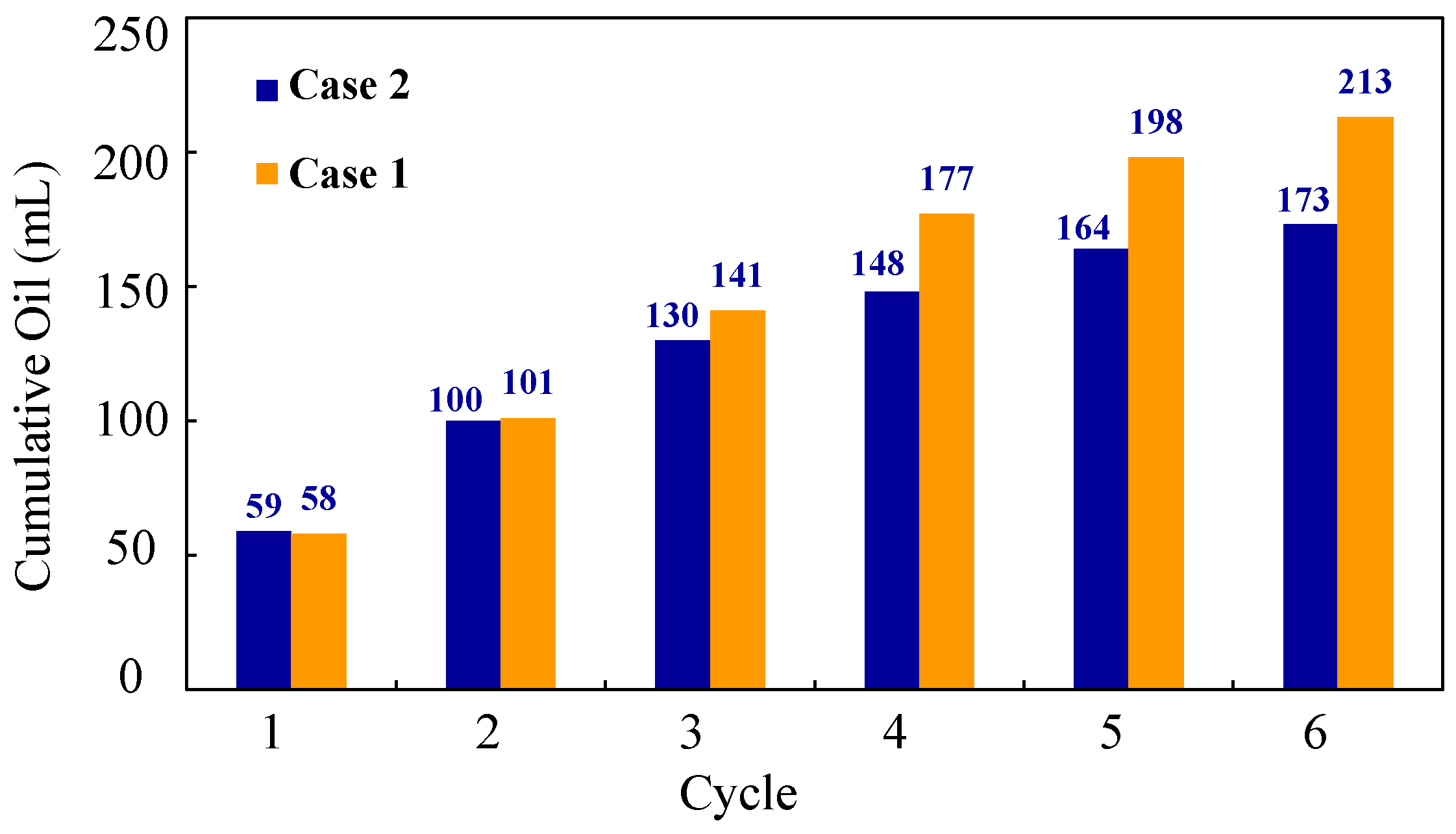


Publisher’s Note: MDPI stays neutral with regard to jurisdictional claims in published maps and institutional affiliations. |
© 2022 by the authors. Licensee MDPI, Basel, Switzerland. This article is an open access article distributed under the terms and conditions of the Creative Commons Attribution (CC BY) license (https://creativecommons.org/licenses/by/4.0/).
Share and Cite
Ji, Z.; Zhao, J.; Chen, X.; Gao, Y.; Xu, L.; He, C.; Ma, Y.; Yao, C. Three-Dimensional Physical Simulation of Horizontal Well Pumping Production and Water Injection Disturbance Assisted CO2 Huff and Puff in Shale Oil Reservoir. Energies 2022, 15, 7220. https://doi.org/10.3390/en15197220
Ji Z, Zhao J, Chen X, Gao Y, Xu L, He C, Ma Y, Yao C. Three-Dimensional Physical Simulation of Horizontal Well Pumping Production and Water Injection Disturbance Assisted CO2 Huff and Puff in Shale Oil Reservoir. Energies. 2022; 15(19):7220. https://doi.org/10.3390/en15197220
Chicago/Turabian StyleJi, Zemin, Jia Zhao, Xinglong Chen, Yang Gao, Liang Xu, Chang He, Yuanbo Ma, and Chuanjin Yao. 2022. "Three-Dimensional Physical Simulation of Horizontal Well Pumping Production and Water Injection Disturbance Assisted CO2 Huff and Puff in Shale Oil Reservoir" Energies 15, no. 19: 7220. https://doi.org/10.3390/en15197220



